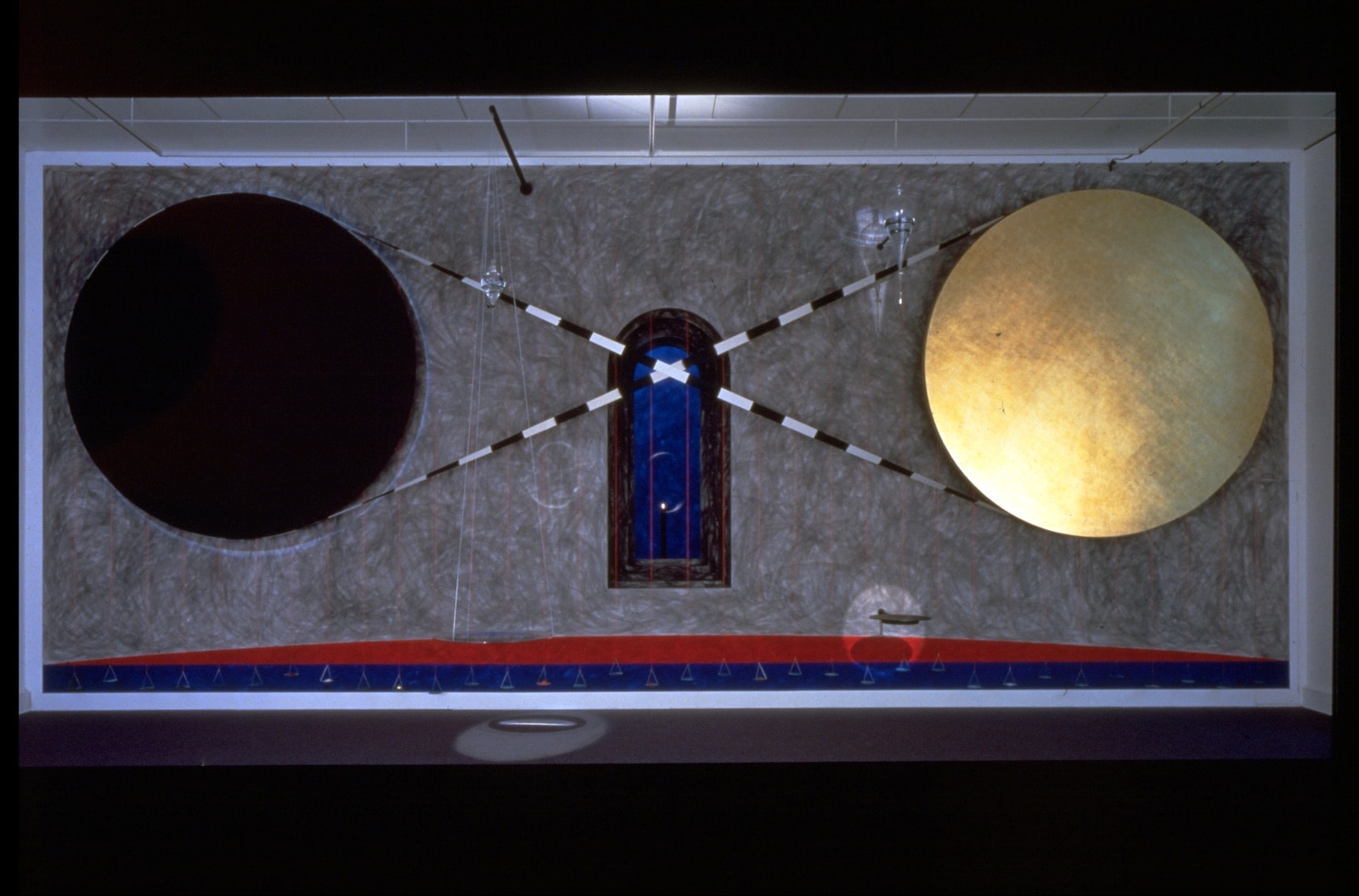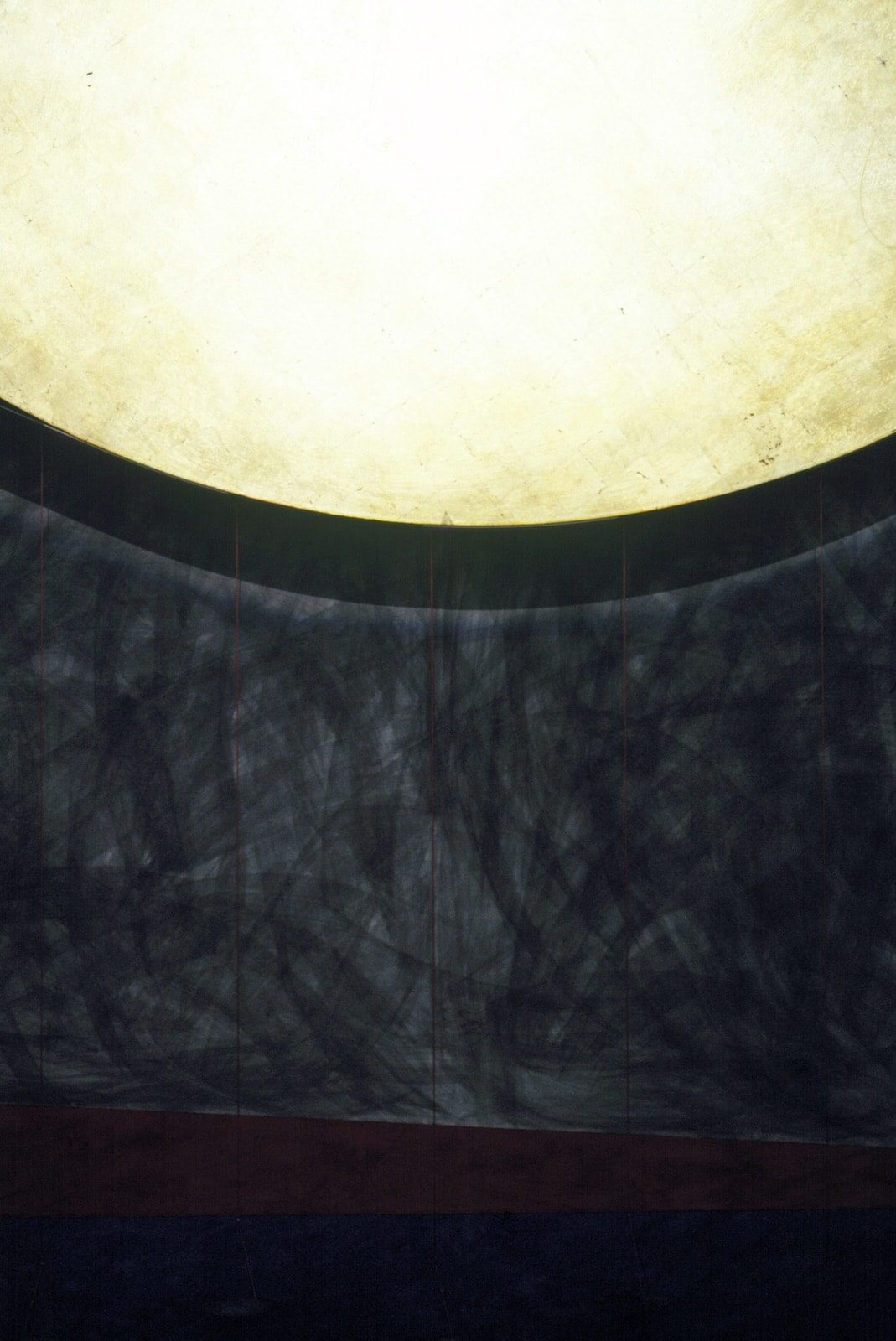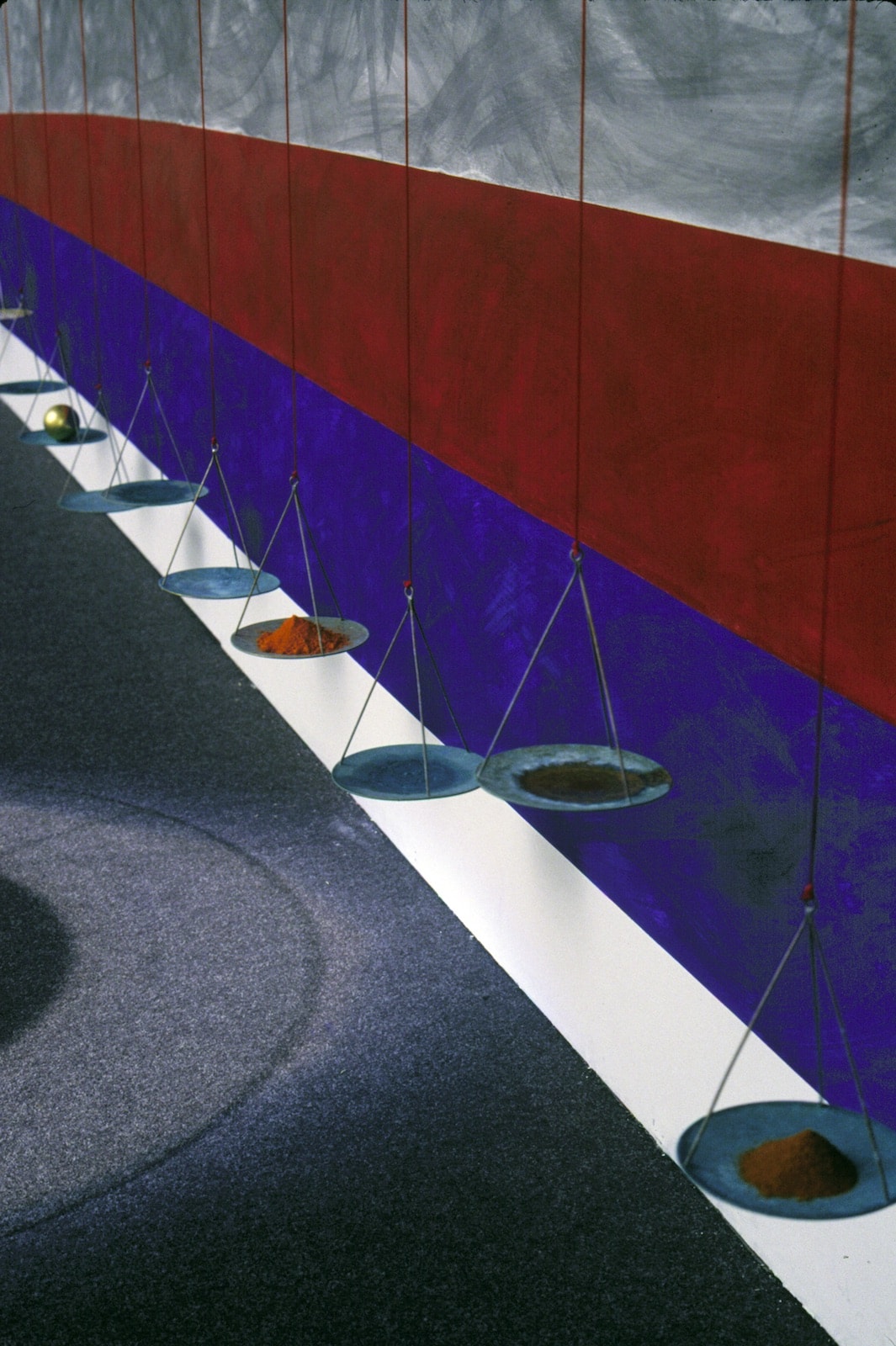Mobius (Cruxis)
Mobius (Cruxis)
Museo D’Arte Contemporanea Luigi Pecci, Prato, Italy
Year:
1988
Dimensions:
16′ x 37′ x 16′
(488 x 1128 x 488 cm.)
Elements:
Incremented mobius strip, revolving celestial opposites (each 9’10” in diameter), miraculous niche, halo and flame, amphorae of liquid, collection lenses, scale pans with elements, red plumb lines, swirled smoke field, terra red horizon, and ultramarine blue waterline
Materials:
Water, glass, mineral oil, wax, pigment, brass, flame, steel, wood, muslin, rayon, incandescent, day and candle light, motors, electronics, spices, salt, and gold
Mobius (Cruxis) was a work constructed within a darkened space at the Museo D’Arte Contemporanea Luigi Pecci on a frontal plane. An arched aperture pierced the façade, opening into a second room beyond, fully lit by a linear horizontal skylight.
Two monumental discs dominated the work’s external façade, presenting diametric opposites. To the right, a brilliant gold circle reflected the solar glow of a hot spotlight. On the left, a contrasting disc of velvet black pigment absorbed the projected light, drawing a blue corona on the wall beyond. The two forms slowly revolved in opposite directions, interconnected by a measured Mobius strip.
Below and to right, a humanoid glass amphora filled with crystalline water was suspended above a large, very hot circular steel plate. Like a single life in a vital increment of time, droplets formed and fell. As they struck the platen, they instantly burst, hissing. A small white cloud of vapor, like a puff of smoke, drifted away. On the left, opposing this drama, a second amphora dripped water to an open vessel, to slowly accumulate and evaporate.
A series plummets hanging from red lines oriented the work with its zenith and nadir above a landscape of red earth and ultramarine blue.
At the work’s center, the arched niche of the aperture receded beyond the frontal plane, entering into a blue chamber of swirling light. The enshrined natural light fluctuated, illuminating plumes of ethereal vapor. By reflection, a gold ring eclipsed the flame of a candle.
Mobius (Cruxis) explored our observed existence, that which we sense yet is unknowable, and our own ephemerality. Presenting the celestial, the omniscient, and the immediate, the work questioned our apprehension of the inevitable – our mortality in the context of what we may view as indelible.





